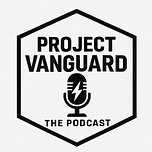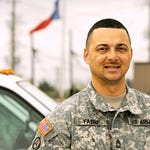The grid is no longer a background utility. It’s the front line.
Explosive load growth from AI, data centers, and new manufacturing is colliding with a system built for a different era. At the same time, cyber and physical risks are converging in ways that stress every assumption we’ve made about reliability and resilience.
In this conversation, Army veteran and energy security leader Jonathon Monken lays out what’s changing, why it matters, and where veterans can lead next.
The stakes just changed
Jonathon’s short version of 2025: growth everywhere, all at once. The old luxury of flat load is gone. Utilities that spent decades saying “yes” are now telling large customers “we can’t serve that load on your timeline.” That is new, and it reshapes decisions across the economy.
“We don’t have the luxury of flat load growth… there’s so much coming onto the system through data centers and manufacturing… utilities [are] saying, ‘I don’t think we can support that.’”
The takeaway is simple and sobering. Capacity, interconnections, and time-to-serve are now gating functions on growth.
What this means for readers: reliability isn’t a side topic. It’s the cornerstone of American competitiveness.
The grid is a battlefield, and resilience is the doctrine
Monken’s career runs from combat arms to state emergency management to PJM to advising on grid resilience and national security. His lens is operational: design for the fight you’re actually in, not the one you wish you had.
He argues the technology portfolio we need largely exists. The pinch points are economics, market rules, and policy coordination. Batteries are already quietly stabilizing markets. Solar-plus-storage at the home and facility level is rising because people want control. But the grid must not become a story of haves and have-nots. Good design and market incentives need to scale resilience for everyone, not just those who can go off on their own.
“Right now, generally speaking, it’s not a technology problem… This is an economics issue, and a policy issue.”
Bottom-up beats culture-war
Clean energy got trapped for years in a single-issue frame. That’s not where communities live. Veterans know the real conversation is reliability, jobs, and local impact. They also carry credibility across partisan lines.
Kevin and Jonathon both call out the gap between online debates and on-the-ground work. The fix is more local participation, not louder national shouting. When veterans host gatherings at industry conferences or in project counties, people show up, talk plainly, and leave with clarity instead of slogans.
“What resonates with people in your community? What means something to the people you live near?”
Why it matters: the fastest way to durable support is to connect projects to people, training, and paychecks where they live.
The lever we have to pull now: siting and permitting
If Jonathon had a single magic-wand reform for the next 12 months, it’s siting and permitting, especially for transmission. We cannot meet modern reliability requirements with yesterday’s processes. Transmission is the backbone that lets a diverse portfolio deliver when and where it’s needed.
“We cannot use historical practice as the model for the challenges we’re walking into… there needs to be a clear understanding of how transmission supports this at scale.”
Translation: no amount of optimism can move electrons without pathways. Build the backbone, speed the queues, keep standards high, and cut the dead time.
Veterans: you are more qualified than you think
Monken’s advice to vets is refreshingly direct: don’t disqualify yourself. Energy is broader than “engineer at a utility.” Operations, security, logistics, project execution, emergency management, community engagement, data, and risk are all core to this transition.
“Give yourself a little credit… your experience and skills are applicable. It’s not ‘do I fit,’ it’s ‘which part of the mission needs me most?’”
Kevin’s framing matches: we’ll give you the battlefield map, you pick your lane, and we help you advance. That’s why Project Vanguard is launching fellowships, chapter leads, and peer networks. It’s not charity. It’s a talent pipeline for national strength.
Bold truth: veterans remain among the most trusted voices in America. Use that trust to serve again, this time on the energy front.
Mission Forward
If we do the simple things quickly and the hard things steadily, we will keep America’s lights on and its edge sharp. Build the backbone. Clear the queues. Scale storage. Bring communities in early. Put veterans out front where calm credibility wins the room.
Energy security is national security.
All of the above is a strategy, not a slogan.
Veterans are built for this fight.
If this resonated, share it with one person who needs to hear it. Drop a comment with your biggest takeaway or question. And if you’re a veteran ready to step into energy, subscribe and raise your hand. We’ll get you oriented and moving.
Timestamps:
00:00 – Cold open, energy security
02:48 – Monken’s path and mission
06:49 – Translating service to energy
12:45 – Legacy stories, PV community
18:27 – Enlistment, deployment calculus
21:39 – Generational shifts in the force
26:44 – Building a veteran pipeline
28:15 – Coalitions, all-of-the-above policy
34:31 – Community siting, local realities
36:20 – End of flat load
40:00 – Storage performance, self-supply trend
41:53 – Siting, permitting, transmission
44:28 – Breaking in, skills, mentorship
50:32 – Closing thanks, next steps











